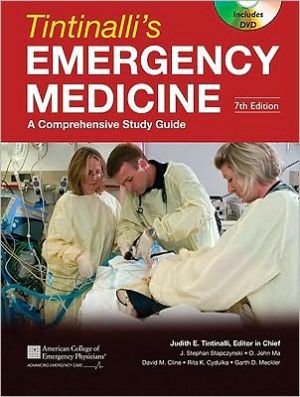Research Strategies in Advanced Practice Nursing
This text offers presentation and utilization strategies that help make the research process more "do-able" and exciting. It provides a theoretical basis in processes and principles, while highlighting the role of the researcher in advanced practice. More emphasis is placed on implementing research in a variety of settings than on undertaking original research. Norwood helps to reinforce the critiquing and implementing skills learned by students at the undergraduate level, and introduces the...
Search in google:
This text offers presentation and utilization strategies that help make the research process more "do-able" and exciting. It provides a theoretical basis in processes and principles, while highlighting the role of the researcher in advanced practice. More emphasis is placed on implementing research in a variety of settings than on undertaking original research. Norwood helps to reinforce the critiquing and implementing skills learned by students at the undergraduate level, and introduces the skills needed to assist in the research process. Current research and guidelines for writing and conveying research results are incorporated throughout. Research phase organization-Devotes each chapter to subsequent phases in the research process. Allows student to fully understand each phase of the research process before they move on to the next. Chapter Focus and List of Key Concepts-For each chapter. Provides a succinct overview of chapter material. A wealth of clinically based examples to illustrate content. Helps Advanced Practice Nurses (APN) see research as a valid and valuable activity. Excerpts from actual studies by APNs. Helps APNs see research as a valid and valuable activity. Issues for APN Researchers and Strategies for Success features. Alerts APN researchers to challenges in clerical research and how to overcome them. Writing guidelines and examples in each chapter. Helps students improve communication of research projects. Guide to Internet resources-In the Appendix. Directs students to tools that will increase their success in their research projects. Eva Lafferty The author designed this book to assist the advanced practice nurse in learning to use the principles of research in the everyday setting. The examples that are utilized to emphasize the main points include research conducted by advanced practice nurses in nonacademic settings. The purpose is to develop an excitement about research in advanced practice nurses and to support them in recognizing a need to base practice on research findings. The author attempts to meet the objectives, but is unable to instill the excitement. This book is written for advanced practice nurses in general. After reading the book, it appears that the target audience is specifically nurse practitioners, but it is unclear if the audience is meant to be students or practicing nurse practitioners. The author is a nurse practitioner by credentials and holds a doctorate in education and is a professor of nursing at a university. There are not any notations on research that the author has conducted, which would have increased her credibility on the subject. The content includes information on how to conduct research, how to interpret research, and how to communicate research findings to other practitioners. The use of clinically based examples of research to illustrate key points is very helpful. In addition, the glossary and appendixes are valuable to the reader -- especially the information on online databases and websites that are helpful in performing searches. An important note is that the book has very small type and can be hard to read. This book is written in a format that makes the information easier to understand when compared to other books on the subject. Also, the content is specifically designedfor advanced practice nurses to help them utilize research in their practice.
PrefaceAcknowledgmentsUnit 1Nursing Research in Perspective1Ch. 1Nursing Research and Advanced Practice Nursing3Ch. 2Overview of the Research Process23Ch. 3Research Approaches43Ch. 4Ethical Considerations In Nursing Research57Unit 2Conducting Nursing Research in Advanced Practice Settings83Ch. 5Introducing a Study: The Research Problem, Purpose, Subproblems and Definitions85Ch. 6Reviewing the Literature107Ch. 7Using Frameworks in Research127Ch. 8Control and the Research Process147Ch. 9Research Design169Ch. 10Sampling Strategies195Ch. 11Determining Sample Size219Ch. 12Data-Collection Strategies and Principles of Measurement241Ch. 13Quality Control in Research277Unit 3Analyzing, Interpreting, and Comunicating Research Findings299Ch. 14Analyzing Quantitative Data: Descriptive Statistics301Ch. 15Analyzing-Quantitative Data: Inferential Statistics327Ch. 16Overview of Multivariate Statistics357Ch. 17Analyzing Qualitative Research Data375Ch. 18Communicating Research Findings393Ch. 19Using Research Findings in Clinical Practice411App. A: Glossary of Terms425App. BSelected Print, Database and Internet Resources for APN Researchers445App. CTable of Random Numbers453App. DSample Size Tables455Index469
\ From The CriticsReviewer: Eva Lafferty, RNC, BSN(Hillcrest Health System)\ Description: The author designed this book to assist the advanced practice nurse in learning to use the principles of research in the everyday setting. The examples that are utilized to emphasize the main points include research conducted by advanced practice nurses in nonacademic settings.\ Purpose: The purpose is to develop an excitement about research in advanced practice nurses and to support them in recognizing a need to base practice on research findings. The author attempts to meet the objectives, but is unable to instill the excitement.\ Audience: This book is written for advanced practice nurses in general. After reading the book, it appears that the target audience is specifically nurse practitioners, but it is unclear if the audience is meant to be students or practicing nurse practitioners. The author is a nurse practitioner by credentials and holds a doctorate in education and is a professor of nursing at a university. There are not any notations on research that the author has conducted, which would have increased her credibility on the subject.\ Features: The content includes information on how to conduct research, how to interpret research, and how to communicate research findings to other practitioners. The use of clinically based examples of research to illustrate key points is very helpful. In addition, the glossary and appendixes are valuable to the reader — especially the information on online databases and websites that are helpful in performing searches. An important note is that the book has very small type and can be hard to read.\ Assessment: This book is written in a format that makes the information easier to understand when compared to other books on the subject. Also, the content is specifically designed for advanced practice nurses to help them utilize research in their practice.\ \ \ \ \ Eva LaffertyThe author designed this book to assist the advanced practice nurse in learning to use the principles of research in the everyday setting. The examples that are utilized to emphasize the main points include research conducted by advanced practice nurses in nonacademic settings. The purpose is to develop an excitement about research in advanced practice nurses and to support them in recognizing a need to base practice on research findings. The author attempts to meet the objectives, but is unable to instill the excitement. This book is written for advanced practice nurses in general. After reading the book, it appears that the target audience is specifically nurse practitioners, but it is unclear if the audience is meant to be students or practicing nurse practitioners. The author is a nurse practitioner by credentials and holds a doctorate in education and is a professor of nursing at a university. There are not any notations on research that the author has conducted, which would have increased her credibility on the subject. The content includes information on how to conduct research, how to interpret research, and how to communicate research findings to other practitioners. The use of clinically based examples of research to illustrate key points is very helpful. In addition, the glossary and appendixes are valuable to the reader -- especially the information on online databases and websites that are helpful in performing searches. An important note is that the book has very small type and can be hard to read. This book is written in a format that makes the information easier to understand when compared to other books on the subject. Also, the content is specifically designedfor advanced practice nurses to help them utilize research in their practice.\ \ \ 3 Stars from Doody\ \








